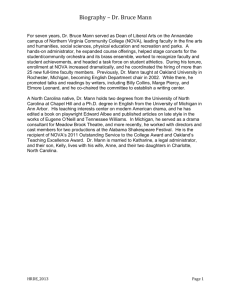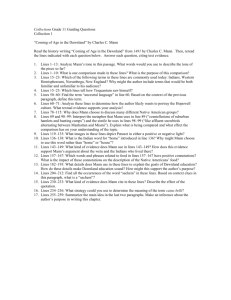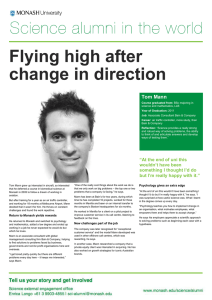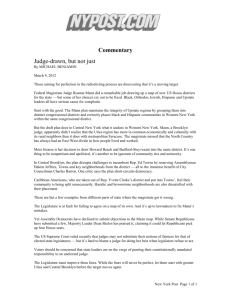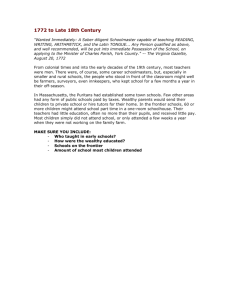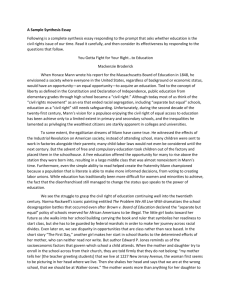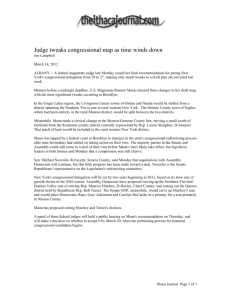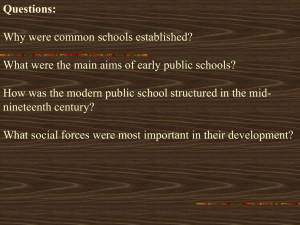Horace Mann Commonly referred to as *Horse Man*
advertisement
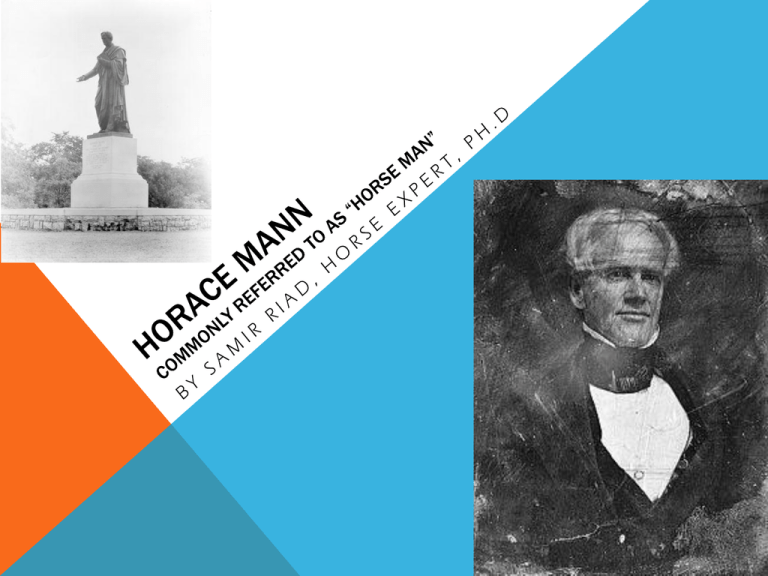
LIFESTYLE • Horace Mann was born on May 4, 1796 in Franklin, Massachusetts. • He had a poor Yankee father, so he only got up to six weeks of education every year. • He would spend his free time in the town library. • When he became older, he enrolled in Brown University for 3 years. The topic of his lessons was “The Progressive Character of Human Beings.” He later studied law for only 2 years. • In 1830, Mann married Charlotte Messer, but she died 2 years later. Mann never got over it, but he married Mary Tyler Peabody. • Mann worked as a social reformer and was active in public charity. He improved an asylum in Worcester. In 1833, he joined the Massachusetts State Senate and mostly funded construction of railroads and canals. SOCIAL REFORM • Horace Mann became the secretary of a newly founded Board of Education. At first he didn’t really have an interest in schools, he was just in it for the $$$. But his passion for it grew as he became very active in improving education and he left all his other jobs. • He checked every school in Massachusetts, held teachers’ conventions, and gave speeches. He wanted people of all genders and races to be educated equally. He believed this could not only teach, but create good morals in the students such as obeying authority. • Mann took a visit to England and returned proposing it’s Prussian Education System. It had specific teacher training, made student attendance a must, and required national testing at the end of each school year (so blame the Brits for the finals). THE COMMON SCHOOL JOURNAL Mann founded and edited this journal that showed his six main principles: • Teachers should not be ignorant of what they teach. • Education should be paid and sustained by the public. • Education is best when taught to people of all races and genders. • Schools should be public. • The teachers should teach with enthusiasm, good methods, and disciplines of a free society. • The teachers should be professional and well-trained. LEGACY • Horace Mann is considered “The Father of Education” by many historians. • Many schools are named after him and some celebrate “American Education Week” in his memory. • A statue of him stands in front of the Massachusetts State House along with Daniel Webster. • Antioch College has a monument that carries his quote “Be ashamed to die until you have won something for humanity.” • His efforts started the Common School Movement after his death, which was in August 2, 1859 when he was 63. COMMON SCHOOL MOVEMENT • Was built on the theory that all students should have common beliefs, aspirations, and values. • It’s leaders were Henry Barnard, James G. Carter, Ninian Edwards, Robert Dale Owen, and Thaddeus Stevens. The leading state was Massachusetts. • Supported Mann’s six principles. • Was successful in the North but didn’t affect the South until the end of the Civil War. • Lead to the formation of the today’s modern day public education system. BIBLIOGRAPHY "Horace Mann Biography." Bio.com. A&E Networks Television. Web. 29 Feb. 2012. <http://www.biography.com/people/horace-mann-9397522>. "Horace Mann." Web. 29 Feb. 2012. <http://www.cals.ncsu.edu/agexed/aee501/mann.html>. PBS. PBS. Web. 29 Feb. 2012. <http://www.pbs.org/onlyateacher/horace.html>. "What Is the Common School Movement? [Contributions of Horace Mann]."HubPages. Web. 29 Feb. 2012. <http://dianelockridge.hubpages.com/hub/What-is-the-Common-SchoolMovement>.
